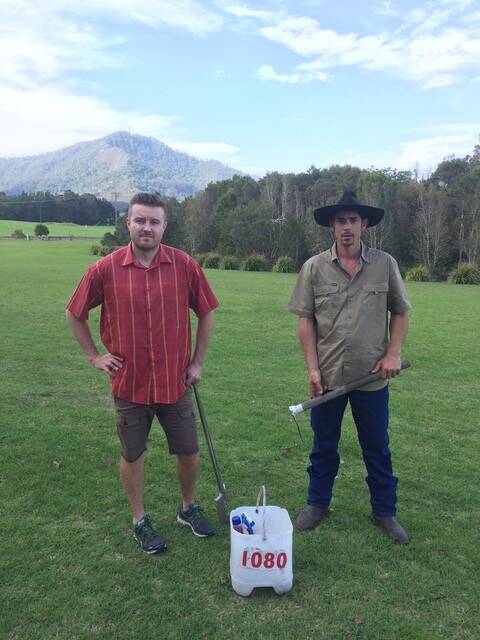
Shoalhaven Landcare Association’s fox control program has gone from strength to strength expanding from seven to 13 properties in the Berry to Budgong area in the last month.
Subscribe now for unlimited access.
or signup to continue reading
It has led to an increase in fox control stations from 22 to 50.
“Since August this year, we have removed more 200 foxes from the trial area.” said program co-ordinator Peter Jirgens.
“This will have reduced the predation on native wildlife, which is already under pressure due to the current drought conditions.
Read more:
“We are heartened by the amount of interest there is in the community about the problem foxes are causing to domestic and native animals.
“In the past month, an additional six volunteers have joined the program to monitor the stations.”
The success of this program has encouraged Shoalhaven Landcare to expand the area south of the Shoalhaven River from Nowra to Wandandian in the New Year.
This new area will cover 550 square kilometres of private property and Shoalhaven Landcare will be looking for 20 volunteers to help with the project.
The success of this program has encouraged Shoalhaven Landcare to expand the area south of the Shoalhaven River from Nowra to Wandandian in the New Year.
The Berry to Budgong fox control program is a 12-month trial to determine the most cost effective way to control fox.
Fox control stations, trapping and licensed shooters have been engaged from Berry to Budgong and north of the Shoalhaven River.
“Recent reports have highlighted the impact feral cats and foxes have had on native wildlife, specifically on the decline of platypus in Australia,” Mr Jirgens said.
“We know from analysing fox droppings, foxes are predating echidnas, eastern pygmy possums, eastern long-necked turtles, ring tail possums and long-nosed bandicoot in the Shoalhaven.
“We are hoping to have 80 stations in operation by Christmas, which will help make a big impact on fox numbers.
“Once the fox population is reduced substantially, we can keep the numbers down using less labour-intensive methods.”
Information technology specialist Haydn Evans is a surprise addition to the team.
“I’m working on streamlining monitoring for the project by developing an app to record data in the field which is uploaded to a central database,” Mr Evans said.
Rad Tyrell is monitoring fox control stations in the Budgong area and to date has removed 26 foxes.
“I have seen the damage that foxes do to lambs and newborn calves and want to do something about it,” he said.
“This project gives me the opportunity to work with others in a team of like minded people to substantially reduce fox numbers in this area.”
If you would like to be involved, contact Peter Jirgens at peter@jirgens.com.au or phone 0488 460011.


